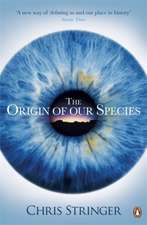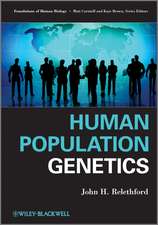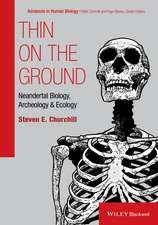Technique and Application in Dental Anthropology: Cambridge Studies in Biological and Evolutionary Anthropology, cartea 53
Editat de Joel D. Irish, Greg C. Nelsonen Limba Engleză Paperback – 18 iul 2012
| Toate formatele și edițiile | Preț | Express |
|---|---|---|
| Paperback (1) | 426.88 lei 6-8 săpt. | |
| Cambridge University Press – 18 iul 2012 | 426.88 lei 6-8 săpt. | |
| Hardback (1) | 915.34 lei 6-8 săpt. | |
| Cambridge University Press – 6 feb 2008 | 915.34 lei 6-8 săpt. |
Din seria Cambridge Studies in Biological and Evolutionary Anthropology
-
 Preț: 479.80 lei
Preț: 479.80 lei -
 Preț: 390.84 lei
Preț: 390.84 lei - 14%
 Preț: 750.86 lei
Preț: 750.86 lei - 11%
 Preț: 700.59 lei
Preț: 700.59 lei - 14%
 Preț: 722.61 lei
Preț: 722.61 lei - 9%
 Preț: 846.79 lei
Preț: 846.79 lei - 11%
 Preț: 460.98 lei
Preț: 460.98 lei - 11%
 Preț: 566.50 lei
Preț: 566.50 lei -
 Preț: 367.91 lei
Preț: 367.91 lei - 11%
 Preț: 693.77 lei
Preț: 693.77 lei -
 Preț: 356.37 lei
Preț: 356.37 lei - 11%
 Preț: 633.61 lei
Preț: 633.61 lei - 11%
 Preț: 619.90 lei
Preț: 619.90 lei -
 Preț: 396.29 lei
Preț: 396.29 lei -
 Preț: 279.00 lei
Preț: 279.00 lei -
 Preț: 304.74 lei
Preț: 304.74 lei -
 Preț: 371.32 lei
Preț: 371.32 lei -
 Preț: 376.06 lei
Preț: 376.06 lei -
 Preț: 332.66 lei
Preț: 332.66 lei -
 Preț: 421.01 lei
Preț: 421.01 lei -
 Preț: 303.60 lei
Preț: 303.60 lei -
 Preț: 309.27 lei
Preț: 309.27 lei -
 Preț: 376.62 lei
Preț: 376.62 lei - 11%
 Preț: 424.92 lei
Preț: 424.92 lei -
 Preț: 308.50 lei
Preț: 308.50 lei -
 Preț: 317.11 lei
Preț: 317.11 lei -
 Preț: 453.33 lei
Preț: 453.33 lei -
 Preț: 322.41 lei
Preț: 322.41 lei -
 Preț: 433.83 lei
Preț: 433.83 lei -
 Preț: 435.78 lei
Preț: 435.78 lei -
 Preț: 471.93 lei
Preț: 471.93 lei - 11%
 Preț: 474.71 lei
Preț: 474.71 lei -
 Preț: 428.90 lei
Preț: 428.90 lei - 14%
 Preț: 934.70 lei
Preț: 934.70 lei
Preț: 426.88 lei
Nou
Puncte Express: 640
Preț estimativ în valută:
81.68€ • 85.50$ • 67.99£
81.68€ • 85.50$ • 67.99£
Carte tipărită la comandă
Livrare economică 31 martie-14 aprilie
Preluare comenzi: 021 569.72.76
Specificații
ISBN-13: 9781107405288
ISBN-10: 1107405289
Pagini: 472
Dimensiuni: 152 x 229 x 24 mm
Greutate: 0.63 kg
Editura: Cambridge University Press
Colecția Cambridge University Press
Seria Cambridge Studies in Biological and Evolutionary Anthropology
Locul publicării:New York, United States
ISBN-10: 1107405289
Pagini: 472
Dimensiuni: 152 x 229 x 24 mm
Greutate: 0.63 kg
Editura: Cambridge University Press
Colecția Cambridge University Press
Seria Cambridge Studies in Biological and Evolutionary Anthropology
Locul publicării:New York, United States
Cuprins
Part I. Context: 1. Introduction Joel D. Irish and Greg C. Nelson; 2. History of dental anthropology G. Richard Scott and Christy G. Turner II; 3. Statistical applications in dental anthropology Edward F. Harris; Part II. Applications in Assessing Population Health: 4. Using Perikymata to estimate the duration of growth disruptions in fossil hominin teeth: issues of methodology and interpretation Debbie Guatelli-Steinberg; 5. Micro spatial distributions of lead and zinc in human deciduous tooth enamel Louise T. Humphrey, Teresa E. Jeffries, and M. Christopher Dean; 6. The current state of dental decay Simon Hillson; 7. Dental caries prevalence by sex in prehistory: magnitude and meaning John R. Lukacs and Linda M. Thompson; 8. Dental pathology prevalence and pervasiveness at Tepe Hissar: statistical utility for investigating inter-relationships between wealth, gender, and status Brian E. Hemphill; Part III. Applied Life and Population History: 9. Charting the chronology of developing dentitions Gary T. Schwartz and M. Christopher Dean; 10. Dental age revisited Helen M. Liversidge; 11. Primate dental topographic analysis and functional morphology Peter Ungar and Jonathan M. Bunn; 12. Forensic dental anthropology: issues and guidelines Christopher W. Schmidt; 13. Inter and intraspecific variation in pan tooth crown morphology: implications for neanderthal taxonomy Shara E. Bailey; 14. The quantitative genetic analysis of primate dental variation: history of the approach and prospects for the future Oliver T. Rizk, Sarah K. Amugongo, Michael C. Mahaney, and Leslea J. Hlusko; Part IV. Forefront of Technique: 15. Methods of ingestion and incisal designs Kalpana R. Agrawal, K. Y. Ang, Zhongquan Sui, Hugh T.W. Tan and Peter Lucas; 16. Dental reduction in late Pleistocene and early Holocene Hominids: alternative approaches to assessing tooth size Charles Fitzgerald and Simon Hillson; 17. Dental microwear analysis: historical perspectives and new approaches Peter S. Ungar, Robert S. Scott, Jessica R. Scott and Mark Teaford; 18. Virtual dentitions: touching the hidden evidence Roberto Macchiarelli, Luca Bondioli and Arnaud Mazurier.
Descriere
A valuable reference source, bringing together a variety of the most accomplished dental researchers.














